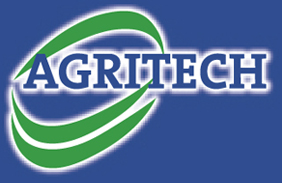The benefits of a reseeding programme are well proven and documented through ongoing research at this stage. Increased production levels coupled with much improved quality over old existing swards throughout the growing season and a better response to applied fertiliser all ensure that the cost of reseeding is easily recouped within two years.
There is however a high level of management required to ensure that the reseeding process is carried out properly. Too often the return on investment is restricted due to poor sward establishment.
The focus areas for reseeding are recommended as follows:
Destroying existing vegetation
It is vital to burn off the existing sward.
Establishing soil nutrient status
It is foolhardy and also false economics not to ensure that the new reseed receives adequate phosphate, potash and has a suitable soil pH environment in which the new reseed can prosper. Care must be taken when testing the soil to ensure that the sample is a reflection of the soil from which the new reseeds will grow and not a top layer of existing sour soil which has accumulated over the years from slurry applications. Agritech recommend a complete soil analysis rather than the basic NPK and pH.
Choice of mixture
We at Agritech firmly believe that the target enterprise of the reseeded sward is the principal criteria for the choice of mixture. For grazing we base our mixtures on high production, digestibility, recovery, palatability and groundcover with our renowned Tipperary 4A mixture the flag bearer in this area.
For multiple cut silage, the target cutting date of the first cut will be the principal driver for the choice of mixture with the date at 67D value highly important.
Use of improved technology and science
Our unique GroQuik® germination dressing is applied to all of our mixtures to ensure maximum germination and a stronger well rooted plant . GroQuik® has been independently verified to be worth €30 per acre with its benefit in difficult seed establishment conditions and to clover establishment particularly apparent.
Seedbed preparation and sowing of seeds
The aim when preparing a seedbed is to produce both a fine and firm seedbed when sowing grass seeds. The development of the modern methods of cultivation have ensured that it is now much easier to ensure a firm seedbed is achieved. It will generally be necessary to roll the ground before sowing to achieve this. The seeds should be sown when the soil moisture and temperature is adequate for good growing conditions. The seed should be covered very lightly post sowing and rolled again. This approach will ensure that the seeds are sown in the very top layer of soil (particularly important for clover establishment), giving the best chance for a maximum strike.
Fertiliser application
As per results of soil analysis, 30 units of nitrogen, 30 units of phosphate and 60 units of potash are always required to ensure proper establishment.
Post emergence spray
The application of a post emergence spray is the last part of the jigsaw. When one creates a seedbed for any crop an ideal environment is also created for all seeds present to germinate and not just the seeds sown. It is therefore most important to apply a post emergence spray when the clover has reached the trifoliate stage and before the grass has covered in any emerging seedling weeds with the dreaded dock being most important.
Management of new reseeded sward
The emphasis with any reseeded pasture must be to encourage tillering of the newly established seeds. The more often the reseeded sward can be grazed the better and in some cases as often as every 14-17 day intervals during the first season is recommended in order to avoid high grass cover accumulations and hence grass tiller losses.
Browse our website to read more about our grass seed mixtures or download our Agritech Grass Seed Brochure (2MB).
To buy our Tipperary Grass Seed range, contact your local distributor.

